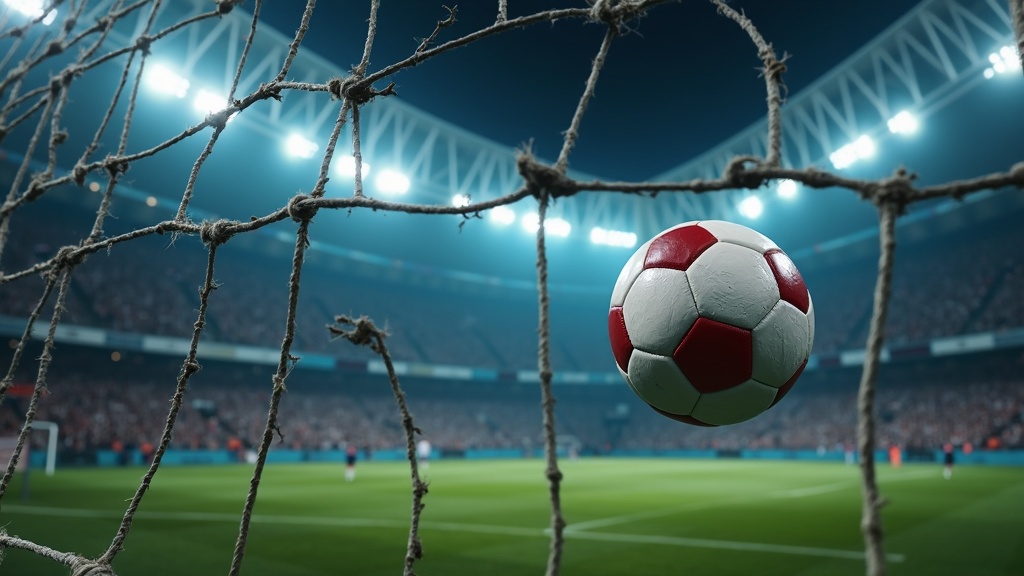
If you’ve ever watched a high-stakes match, you know how tough it can be for a striker to finish when all eyes are on them. Finishing under pressure is the difference between putting your team ahead and walking away frustrated. Even solid finishers in training can miss when the adrenaline kicks in during real matches.
Most players want to get better at scoring under pressure, but nerves, rushing, and overthinking can make the goal seem a mile away. With the right strategies and mindset, you can learn to keep your cool and put those chances away when it matters.
This guide walks through practical ways to train finishing under pressure, so you can step onto the pitch feeling ready and confident, whatever the situation. Learning to handle pressure doesn’t happen overnight; it’s built step by step with honest effort and sharp focus. No matter your current skill level, you can grow into a player who thrives in high-tension moments.
Step 1: Build a Foundation with Basic Finishing Drills
Nailing the basics is where everything starts. Good technique is super important for confident finishing, especially when you’re tired or under pressure. It helps your body know what to do, even when your brain is working overtime.
Key Elements of Finishing:
- Body positioning, Stay balanced and over the ball when you shoot.
- Head over the ball, Keeps your shot on target and low.
- Nonkicking foot placement, Next to the ball for better control.
- Follow-through, Keeps your shot accurate and powerful.
Practice Routine:
- Simple one-touch finishes from 5–8 yards away.
- Use both feet to practice shooting, even if you have a preferred foot.
- Add in volleys and halfvolleys for variety.
Repping out these basics in a no-pressure setting makes them automatic. Once you’ve got confidence hitting the target, you’re ready to add in pressure. Many pros start every shooting session by grounding their form with these essentials, ensuring a reliable base before getting into advanced drills.
Step 2: Recreate Pressure Situations in Practice
Drills that add real pressure make the biggest difference when it’s game time. Creating matchday stress during training helps your mind and body adjust, so the next shot in a match feels familiar instead of overwhelming. Even if you practice alone, you can crank up difficulty by setting strict time limits or using creative distractions to mimic what you’ll feel during a match.
Ways to Add Pressure in Practice:
- Set time limits, Try to finish in under three seconds after receiving the ball.
- Use defenders, Have a coach or teammate close you down quickly.
- Add consequences, Missed shots mean sprints or another quick challenge.
- Simulate crowd noise or distractions, Use speakers or teammates to shout while you finish.
Keep scoring goals your main focus, not just blasting shots. Train yourself to stay composed and pick your spot, even when it’s loud or a defender is on your shoulder. Make each attempt about the quality of the finish, and don’t be afraid to repeat especially tough situations until they start to feel more comfortable.
Step 3: Master First Touch and Quick Decision-Making
Heated moments in front of goal don’t give much time to think. Your first touch and how quickly you make decisions are both really important for scoring under pressure. While technique helps, your speed in deciding where and how to finish can be the difference between a goal and a lost chance.
How to Train Quick Decisions:
- Play smallsided games with small goals, Forces faster thinking and quick shots.
- Practice turns and shots from different angles, Angle matters when a defender is nearby.
- Set up scenarios that require one-touch finishes, No time to settle the ball means you get better at reacting.
Extra Tip:
Work with a buddy who can call out where to shoot—top corner, near post, far post—right as you’re about to receive the ball. This randomizes your decisions, just like in a real game. Over time, your brain adapts and your reactions become faster, making split-second finishing natural.
Step 4: Train Your Mind for Composure
Finishing under pressure isn’t just about skill. Mental toughness is just as important. Even players with great technique can miss if nerves take over. Training your brain is as useful as technical drills.
Tools for Mental Composure:
- Breathe, Slow, deep breaths before you shoot help steady nerves.
- Visualization, Imagine yourself scoring in different scenarios during downtime. Picture celebrating, too; this brings a positive association to big moments.
- Positive self-talk, Quick, positive reminders like “I got this” can boost confidence.
- Pre-shot routine, Develop one or two consistent movements before every shot, like a bounce or glance at the goal. This is calming and helps you stick to your process.
Working on staying calm in training makes it easier to stay calm in matches, even if the stakes are high. Building mental habits in practice allows these skills to show up automatically in games.
Step 5: Explore Finishing Techniques for Pressure Moments
Different scenarios call for different finishes. The best players know when to use finesse instead of power, or when a quick chip is better than blasting it. Mixing things up helps you feel confident, no matter how much pressure you’re under. The more techniques you have in your toolkit, the more answers you have for each situation.
Techniques to Practice:
- Sidefoot finishes for accuracy, Focused on placement over power.
- Driven shots for power, Get your laces through the ball for distance and force.
- Chips and dinks, Super handy if the goalkeeper is rushing at you.
- Finishing from awkward balls, Try volleys, headers, and rebounds.
Use pressure drills for each technique. Defenders closing you down, quick shots from loose balls, or one on ones with the goalie, all help you get comfortable choosing the right finish on instinct. Regularly rotate which technique you practice so that when pressure hits, you trust your muscle memory to make the right call.
For even more challenge, try incorporating weak-foot finishes and taking shots after a sprint or change of direction. Unpredictable, real-game moments will start to feel less overwhelming with consistent reps from harder starting positions.
Step 6: Analyze Missed Chances and Learn from Them
Misses are part of the game for everyone—even the pros. It’s super important to use missed chances as a way to get better, instead of getting frustrated. Growth comes from facing mistakes head on and using them to sharpen your technique and confidence.
How I Review Misses:
- Ask why I missed: Was it a technique problem? Poor decision in the moment? Nerves?
- Watch video if possible. A second look usually gives fresh perspective and helps track down tendencies you might not notice in the heat of the moment.
- Focus on solutions. If my head was back and I sent the shot over, I’ll end my next practice with a few low, controlled finishes.
Getting curious about misses, rather than discouraged, helps you grow fast. The more you can learn, the better your next pressured finish will be. Some players keep a notes journal or a practice log to track common mistakes and new drills that fix them. This keeps improvement steady and boosts motivation, too.
Common Questions & Trouble Spots
I get too nervous and rush my shot. What can I do?
- Count to two as you approach the ball. This simple step can force you to slow down and find your rhythm.
- Practice preshot breathing to settle nerves. Make it a habit regardless of practice or game.
- Do extra pressure drills so fastpaced moments feel more normal. The more you practice chaos, the more relaxed you’ll be in matches.
I always go for power and miss the target in games.
- Incorporate accuracy-only drills, aiming just for corners at low speed.
- Score five placed finishes for every one power shot at practice. This keeps you focused on precision instead of force.
Defenders close me down too quickly, and I panic.
- Work on quick, one-touch finishes with a partner pressing you.
- Try smallsided games where space is tight to rehearse quick choices and reactions. With regular reps, your choices and movements will get faster and more natural.
Tips & Action Steps
Learning to finish under pressure takes time and plenty of practice, but breaking it down into technical, tactical, and mental parts makes it easier. Mix up your training, add pressure where you can, and keep working on staying calm.
When you can score in tough drills, your confidence on match day will be unshakeable. Take inspiration from strikers who have turned high-pressure moments into career highlights; even the top pros have struggled with nerves, but their relentless effort in training gave them the edge.
Your Next Moves:
- Add at least one pressure drill (like defender chases or timed finishing) to your weekly practices.
- Set a simple mental routine for composure—like a deep breath before each finish.
- Review your finishes after every match or practice, looking for one thing to improve each time.
Consistency pays off. The more often you see pressure in training, the less intimidating it becomes on game day. Keep working, and pretty soon scoring under pressure will start to feel natural. Remember, making mistakes is just part of the adventure. Stay persistent and trust the process—your goals are within reach!
What do you think about this topic? Comment below to hear your thoughts. Thank you and keep on follow us.

